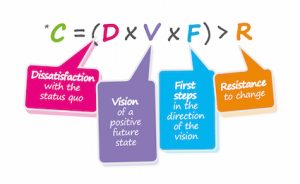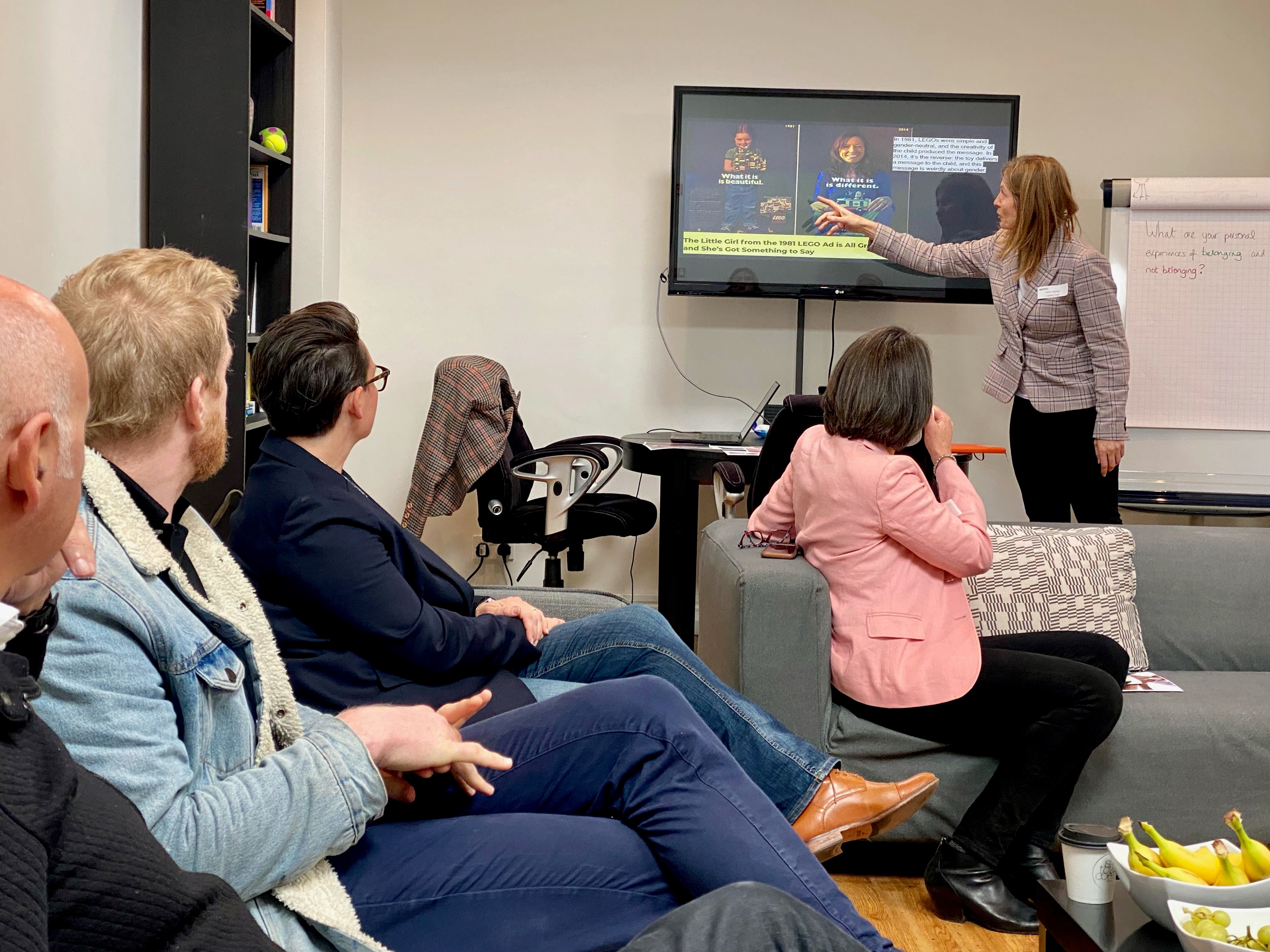Connect with us on LinkedIn for updates and the latest industry news
Why is dissatisfaction such a big deal in the Change Equation? Our view? Without it we go nowhere – all other items can be in place for positive change but if we are not ‘dissatisfied’ with our now then why would we change? If the status quo is fine for us what is the need to move, shift, deviate from the current way?
What if we embrace that our role as leaders is actually to magnify the dissatisfaction around us?
For reference the Dannemillar formula for sustainable change is (D x V x F) > R

The premise being that, successful organisational (or individual) change is only possible when the product of D, V and F, is greater than the resistance to change.
As the motivational vector within the ‘Change Equation’ the dissatisfaction level (or the desire for a shift) needs to be high in order to support any movement. The energy for ‘why’ we doing this needs to be strong…
But this vectors opposing force is ‘satisfaction’ which could be more complex than simply ‘I’m ok with everything’. It could be more like:
- I’m not sure I have the energy, therefore I’ll take what I’ve got
- I’m not sure its worth the effort, we’ve tried it before and its failed
- I’m happy with my performance, I see no need for change
- I do my job, I get paid, I can’t see the benefit for change
This opposing force may be a misguided happiness with ‘status quo’, where employees are happy with what they have and the benefit of change are not of great enough value. In this situation we may have to work harder to create a willingness for change, especially if change is important for team, department or organisational success. Even more critical if change is a necessity of survival.
Positioning change as something of value across the board, something that can have positive effects in more than one space can help. Explaining its value in the context of:
The effect on the organisation – sustainability, growth, diversification
The effect on the client – better services and return purchase
The effect on the employee – increased income, improved working environment
For those that are still struggling with the shift, invest time in understanding their measure of satisfaction. What is it about the now that they like and look to show them what the new future could be. This may then lead them to being dissatisfied with what they have currently.
General Questions you could ask of employees:
- What are you satiated with? What more in this space could we offer though change?
- What is making you happy at work? What other related happiness factors could you see existing in our new future?
- What is keeping you in this current status? What certainties could help fuel your desire for change?
Role based questions you may ask employees:
- Of the things you are enjoying in your current role what would you like more of?
- Of the things you are doing what would you wish there was less of?
- Whats missing, that we may be able to offer?
Where you are able align your ‘change offer’ to the individuals responses.
 If things are still stalling I quite like the way Boden Hanson, four time Australian Olympian rowing, three time Olympic medalist and specialist coaching consultant looks at dissatisfaction within the equation.
If things are still stalling I quite like the way Boden Hanson, four time Australian Olympian rowing, three time Olympic medalist and specialist coaching consultant looks at dissatisfaction within the equation.
Boden talks about athletes (or your workforce if you like) having a ‘personal thermostat’ for satisfaction. Some athletes will set their thermostat extremely high and will not be happy with anything less than their best performance. Where others may have their setting quite low. It is in these cases where the coach (or manager) has to increase the thermostat stetting so that athletes (your workforce) can aspire to a higher level of performance. Some steps toward this include:
- Identifying what your athlete (workforce) thermostat setting is (high or low)
- Establishing what the future good looks like (new expectations of performance)
- Magnify the level of personal dissatisfaction with current performance (compare the now with the future)
The idea being to open employees up to wider possibilities of personal performance (personal excellence)
Perhaps a great question to really understand the Dissatisfaction you and others are feeling is to ask ‘Whats your personal thermostat reading?’




